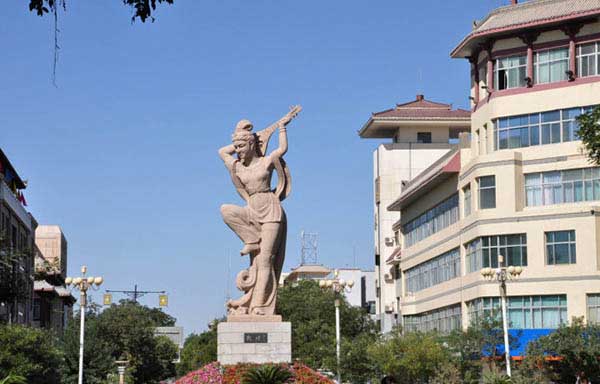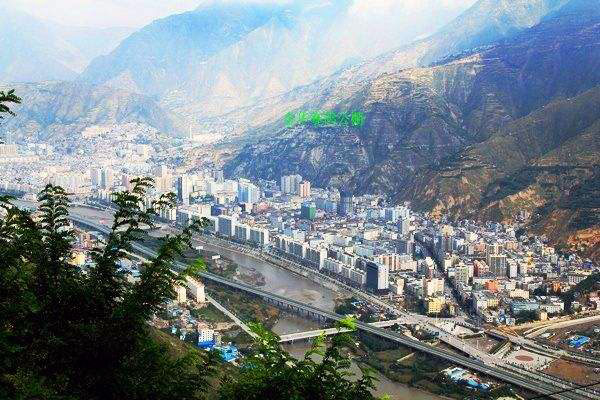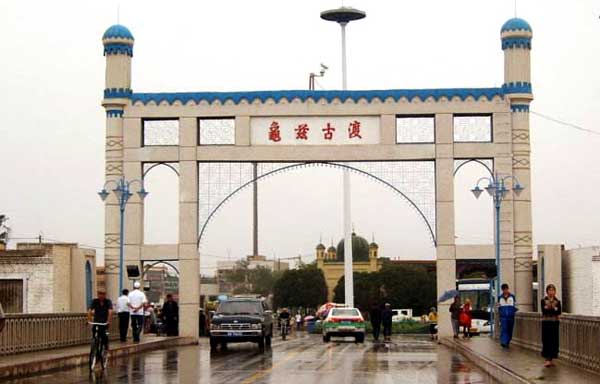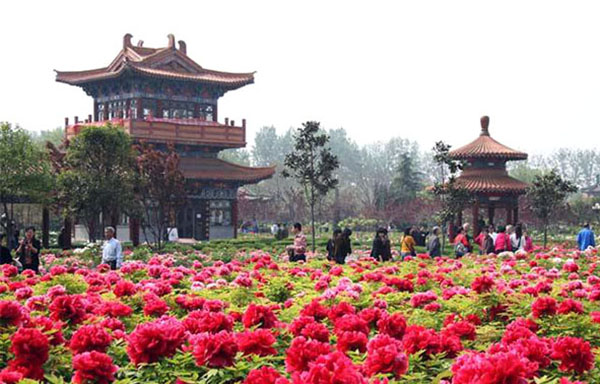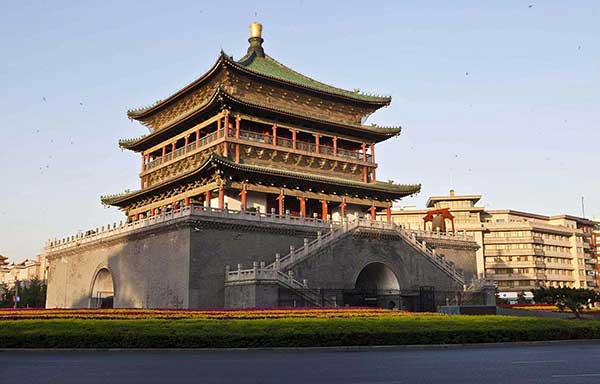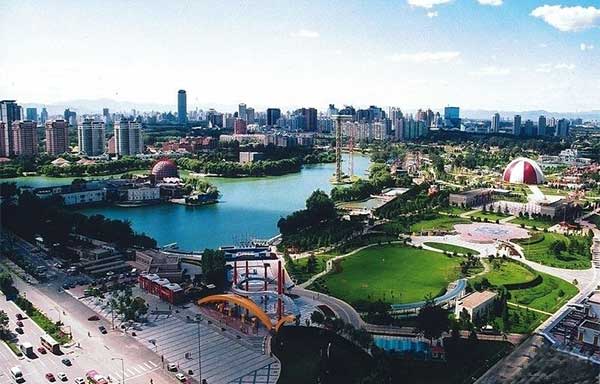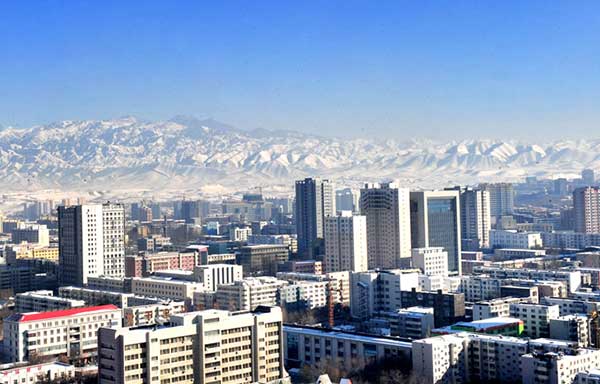- By admin
- In SilkRoadKnowledge
- 2016-06-07
Badain Jaran desert -- curves of the god
We ambled across the salty terrain to stop at the foot of the slope and check our altitude with a GPS unit. We were 1,237 metres above sea level. Looking up at the imposing wall of sand before us, we began climbing.
The slipface is the steepest slope on a sand dune, and it’s aligned with the dominant wind direction. All over the world, these slopes are remarkably constant in their angle – almost always between 33° and 35° to the horizontal. This is the angle of rest of individual sand grains, which cover a narrow band of particle sizes. Any larger, and they are classed as gravel; if the grains are smaller, they are known as clay or dust. But the slipface that Bruno and I were intent on climbing appeared to defy the laws of physics. It seemed much steeper.
We soon realised that going straight up the slope was impractical. A foot set into the sand simply resulted in a gentle cascade that brought you right back to where you started. Even with the aid of his walking sticks, Bruno found it impossible, so we altered our plan to follow a ridge that snaked its way up just to one side of the enormous slipface.
Mounting the snake ridge entailed only marginally less effort than tackling the slipface head-on, but it was at least possible. We ascended slowly, Bruno leading the way with his sticks. I found the going slightly less tiring if I placed my feet in Bruno’s footprints, but it was still strenuous work.
We stopped after a while to catch our breath and look out over the basin. A wisp of smoke escaped from the chimney of Lao Gao’s house. Bruno checked our altitude on the GPS: 1,352 metres above sea level. We’d passed the 100-metre mark, but a glance towards the summit told me we weren’t even close to half-way up the megadune.
The snake ridge was getting steeper, and I had to stop more frequently to get my breathing under control. The sand seemed to be getting softer, too, and the strain on my knees was almost unbearable.
Clockwork toy
The sun was pale and watery in a sky concealed beneath a veil of dust. This fine material is constantly being excavated by the fierce winds of the Gobi and blown southeastwards across China. Thousands of centuries of this wind action has laid down a thick layer of the stuff, hundreds of metres deep, in a region known as the Loess Plateau. It makes rich and fertile soil; the plateau has been dubbed the Rice Bowl of China.
Immense plumes of desert dust from the Gobi have been tracked by satellites far beyond China, driven out across Japan and Korea and over the Pacific Ocean. Some of this material even reaches North America. On we went. I felt like a clockwork toy, plodding my way up the gargantuan pile of sand. We were both losing strength but, within reach of the summit crest, Bruno stopped once more, leant on his sticks and checked the GPS.
We’d covered 300 vertical metres, he said, nearly 1,000 feet. It seemed like a very significant achievement to me. “I can see the final ridge,” Bruno puffed, shading his eyes from the hazy sun, “but I have to warn you, it’s a long way, and I think this is the hardest part.”
The sand here was the softest so far. Each step, even when I placed my feet in Bruno’s footprints, resulted in a mini-avalanche. I tried a sort of shuffling technique, but it made no difference. Each time I moved, I generated a cascade of grains and I found that I had to keep moving or I would actually lose height.
After another five minutes of hard work, I fell flat on my face and started crawling. On all fours, I made more progress, but I’d been reduced to the status of a four-legged animal and I still had to stop every ten metres to rest.
Panting hard, I began to wonder if I had the stamina to make it, but Bruno was now standing on the crest and I wasn’t about to let him do it alone. I delved deep and crawled another few metres. It was as if I were doggy-paddling to the top of this bloody sand dune.
As my head emerged over the sharp crest, a blast of wind filled my eyes and mouth with sand. Bruno was still standing, catching his breath. “Almost there,” he called. I looked up to where he stood, gazing at the slightly higher peak. The crest we were on curled away to our right, rising another few metres to the summit. Bruno started walking and I regained my feet to join him.
We tottered along the narrow crest, battling against the furious wind as it sent torrents of sand streaming into the blue ether. After the last few metres, we sank onto our haunches at the summit. Bruno checked the GPS. It took a few minutes to locate the satellites. Laid out all around us was the world of sand, a mountain range of megadunes that stretched far into the distance.
Finally, the GPS gave us our reading: “1,582 metres,” Bruno said. In our exhausted state, it took a while to do the mental calculation. “Three hundred and forty five metres high,” I said at last, “about 1,200 feet.” We’d just climbed a dune that was taller than the Eiffel Tower.
We made our way back down along the sharp crest to stand and stare at the slipface that dropped below us. I looked at Bruno. “I think this is probably the quickest way down,” I suggested. He grinned. “Yes, I think so too.” I took one last look at the peak we’d just conquered and stepped into the void. Gravity grabbed me immediately, yanking me down. My legs became a blur, sprinting at an impossible speed just to stop myself from nose-diving.
I was running faster than I’d ever run before. Somewhere to my right, I saw Bruno flying slightly sideways across the slipface, but I was going straight down. My heart was bursting, but I couldn’t stop. It had taken us nearly four hours to climb the megadune. We reached the bottom in about four minutes.
Related destinations
Why Choose Us?
We are the top Silk Road tour operator based in Dunhuang, China. We focus on providing well designed Silk Road China Tours with resonable price and thoughtful service.
- Easy & carefree booking
- The best value
- Great travel experience
- Locally operated
Hot Tours
-

6 days Gansu tour to Binglingsi, Xiahe and Langmusi
Tour type : Private tour Price : from *** Destinations : Lanzhou - linxia - Xiahe - Langmusi - Hezuo - Lanzhou -

12 Days Gansu Highlights Tour
Tour type : Private tour Price : from *** Destinations : Xian – Tianshui – Lanzhou – Xiahe – Langmusi – Hezuo – Zhangye – Jiayuguan - Dunhuang -

10 Days Silk Road Classic Tour
Tour type : Private tour Price : from *** Destinations : Xian - Zhangye - Jiayuguan - Dunhuang - Turpan - Urumqi -

5 Days Zhangye - Alxa youqi Highlights Tour
Tour type : Private Tour Price : from *** Destinations : Zhangye - Alax youqi - Zhangye

